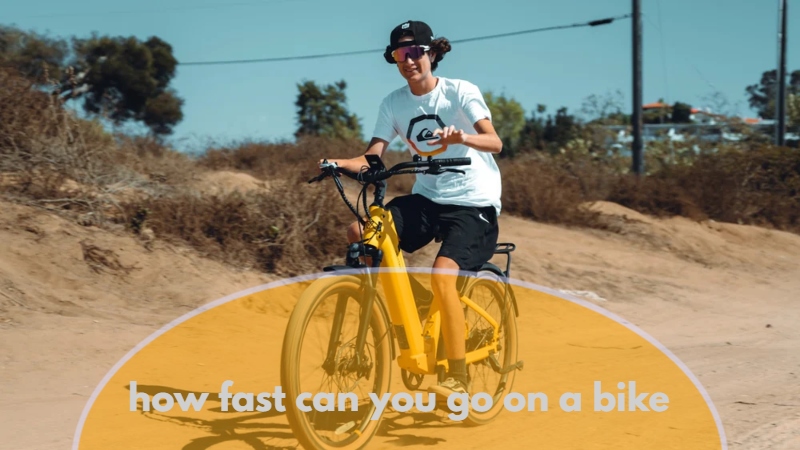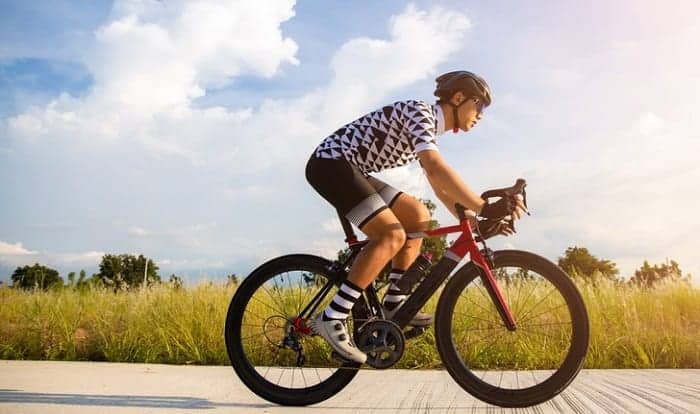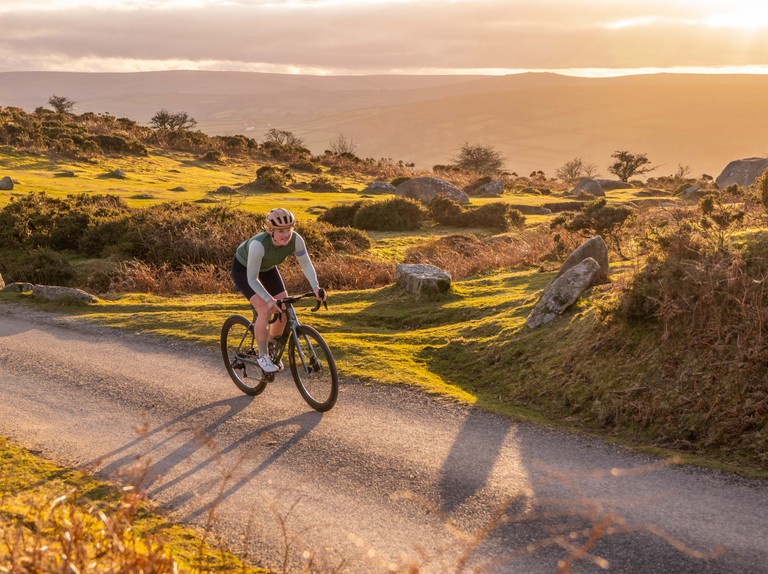Welcome to the thrilling exploration of the ultimate question for cycling enthusiasts and speed seekers: How fast can you go on a bike? This question is not just a measure of physical capability but a challenge against the very air we cut through, the landscapes we navigate, and the mechanical symbiosis between rider and machine. Join us as we pedal through the factors that dictate bicycle velocity, push against the boundaries of human limits, and untangle the intricate dance of aerodynamics and speed.
Factors Affecting Bicycle Speed: A Multifaceted Equation
When it comes to determining how fast you can go on a bike, it’s super important to understand the variables at play. The speed you can achieve while cycling is not a number plucked from thin air; it’s the culmination of a complex equation involving human endurance, mechanical precision, and environmental interaction.
Cyclist’s Power: The Muscle Behind the Machine
The most critical component in the cycling speed equation is the cyclist’s power output. The raw energy you can generate through pedaling directly influences how fast you can go on a bike. This power is measured in watts, and higher wattage means more speed. The fittest cyclists, like those who compete in the Tour de France, can sustain upwards of 400 watts in an hour-long effort—power that can propel them to speeds unattainable by the average rider.
However, power alone isn’t the sole determinant of velocity; it’s also about how efficiently that power is transferred to the bike. The bike’s gears, chain tension, and even the type of pedals can amplify or dampen the force exerted. This is why cyclists obsess over their bike’s components and setup—it’s the difference between cruising and rocketing.
Aerodynamics: Slicing Through the Air
Aerodynamics is where the art of speed truly unfolds. As a rider accelerates, air resistance increases exponentially. Reducing this drag is paramount to achieving high speeds. Cyclists work on their body position, shrinking themselves into a more compact form, lowering their head, and narrowing their shoulders, all to minimize the air’s impact.
The design of the bike itself is also a critical factor. Sleek frames, slim tires, and aerodynamic rims can all reduce air resistance. Even the cyclist’s attire is chosen with aerodynamics in mind—form-fitting clothing that avoids any flapping fabric that could catch the wind is super important.
Terrain: The Earth’s Influence on Speed
Ask any cyclist, and they’ll tell you—the earth’s topography is a constant companion or adversary on any ride. The flatness of a velodrome offers the perfect canvas for speed, but most riders contend with a more variable canvas. Hills, gradients, and the texture of the surface under the tires all play into how fast you can go on a bike.
Climbing a steep incline requires more power to overcome gravity, which reduces speed. Conversely, a downhill provides a gravity assist, allowing cyclists to reach speeds that are hard to achieve on flat ground. Even the smoothness of the pavement can affect speed, with rough surfaces sapping velocity through increased rolling resistance.
Wind Conditions: The Invisible Hand
The wind can be a friend or foe. A tailwind feels like a hand gently pushing you forward, enabling you to go faster with less effort. Conversely, a headwind can feel like riding through molasses, forcing you to exert more power just to maintain speed. Crosswinds add another layer of complexity, challenging your balance and bike handling skills. Understanding how to harness or combat the wind is a subtle yet super important part of cycling strategy.
Bicycle Type: The Right Tool for the Job
The type of bicycle plays a significant role in how fast you can go on a bike. Road bikes, with their lightweight frames and thin tires, are built for speed on smooth asphalt. On the other hand, mountain bikes are designed for stability and durability over rough trails, not for setting speed records on the pavement. Even within road bikes, there are special time-trial bikes that prioritize aerodynamics for solo efforts against the clock.
Selecting the right bike for the terrain and your speed goals is like choosing the right sail for a boat—it can make all the difference in harnessing the power at your disposal. Each type of bike is a different expression of the same desire: to travel swiftly on two wheels.
Records that Define Human Limits: Pushing the Boundaries
The quest to quantify how fast can you go on a bike has led to some awe-inspiring records. These milestones are not just numbers; they are narratives of human potential and technological innovation, marking the upper echelons of what cyclists can achieve when both are pushed to their limits.
The Fastest Human-Powered Vehicle: A Symphony of Speed
When Francesco Moser shattered expectations by setting the world record for the fastest human-powered vehicle, he was not just pedaling a bike; he was orchestrating a symphony of speed that peaked at a breathtaking 209.05 mph. This feat was not accomplished on a standard road bike but a recumbent bicycle engineered to perfection, encapsulating Moser in an aerodynamic shell that sliced through the air like a blade.
This record is a testament to what is possible when human force is amplified through the lens of cutting-edge design and an unwavering pursuit of aerodynamic purity. It shows that how fast you can go on a bike can be significantly extended with the right combination of human grit and technological sophistication.
The Fastest Bicycle Racers: The Road Warriors
In the professional peloton, speeds that would leave most cyclists breathless are just part of the day’s work. Cyclists in the throes of competition reach velocities exceeding 40 mph, pushing their limits in a high-stakes dance with physics. Dennis Burkhard’s blistering 58 mph sprint during a road race in 2012 is a stark illustration of what human legs can achieve with the adrenaline of competition fueling every pedal stroke.
These racers are not just athletes; they are the pilots of their two-wheeled rockets, navigating the delicate balance between control and reckless abandon in their pursuit of victory and the pure ecstasy of unmatched speed.
The Fastest Uphill Climbs: Defying Gravity
Climbing might be the antithesis of speed for many, but for a select few, it’s an opportunity to defy gravity and expectations. The Tourmalet, one of the most feared climbs in the cycling world, has seen cyclists ascend its punishing slopes at speeds up to 20 mph, turning a mountain into a monument to human endurance and willpower.
These climbs are as much a battle of the mind as they are of the body, where the right mental fortitude can push a cyclist to maintain a pace that seems to flirt with the impossible. They exemplify that how fast you can go on a bike is not just about flat surfaces and tailwinds—it’s about conquering every terrain.
Unraveling the Secrets of Aerodynamics: Science in Action
To understand how fast you can go on a bike, it is imperative to delve into the science of aerodynamics. It’s the force that every cyclist battles against when pedaling towards the horizon. Aerodynamics can be both a formidable foe and a helpful ally on the quest for speed. Let’s explore the principles that allow cyclists to slice through the air with greater efficiencya.
Streamlining: The Art of Airflow
The streamlined design is paramount in overcoming the cyclist’s main adversary: air resistance. Every feature of the bicycle’s design, from the sleekness of the frame to the profile of the wheels, is tailored to optimize airflow and minimize drag. The goal is to create a seamless path for air to flow over the bike and rider, reducing the turbulent wake behind and thus the effort required to push forward.
Advancements in technology have allowed for intricate testing and refinements. Wind tunnel experiments and computational fluid dynamics (CFD) are extensively used to shape the design of bikes, resulting in marvels of engineering that can cut through the wind with minimal resistance.
Rider Positioning: Harnessing the Human Form
The cyclist’s position is as critical as the bike’s design when it comes to aerodynamics. By adopting a low, tucked position, cyclists reduce their frontal area, which is the primary factor in air resistance. When descending or sprinting, riders often drop their torso close to the handlebars and pull in their elbows to streamline their body, achieving a dramatic reduction in drag.
It’s a delicate balance, though, as maintaining such aggressive positions requires flexibility, core strength, and the ability to still breathe and pedal effectively. Hence, personal biomechanics and comfort are factored into finding each rider’s optimal aerodynamic position.
Clothing Choice: The Fabric of Speed
Clothing in cycling is not just a matter of style; it’s a carefully considered element of aerodynamics. The skin-tight lycra suits worn by professional cyclists aren’t for show; they are designed to smooth the flow of air across the body and reduce turbulence. The same goes for aerodynamic helmets, gloves, and even the type of shoes worn.
These clothing choices often include textures and materials that have been tested to reduce drag even further, some featuring dimpled surfaces similar to a golf ball to manipulate airflow and reduce wake.
Equipment Tweaks: The Devil’s in the Details
Even the smallest equipment choices can have a substantial impact on speed. Aerodynamic handlebars that allow for a flat-backed position, deep-section rims that cut through the air, and even the bottle cages and water bottles are all considered in the pursuit of aerodynamics.
Cyclists also tune their machine with precision, selecting tires with the lowest rolling resistance and using lubricants that minimize friction. In the quest for aerodynamics and speed, no detail is too small to be optimized.
Conclusion: Achieving Optimum Speed Through Knowledge and Technique
In answering the question, how fast can you go on a bike, we’ve uncovered the multifaceted nature of cycling speed, influenced by the cyclist’s power, aerodynamics, terrain, wind conditions, and bicycle type. We’ve also seen the breathtaking records that showcase the pinnacles of speed in the world of cycling.
Embracing these principles, anyone can experience the exhilaration of pushing their limits and discovering just how fast they can go on a bike. It’s a personal journey as much as it is a scientific and athletic endeavor. So, suit up, streamline, and set forth on your quest for speed. And if you’re looking to equip yourself with gear that helps you break your speed barriers, make sure to visit Refried Cycles for everything you need to make your cycling experience faster and more enjoyable.









